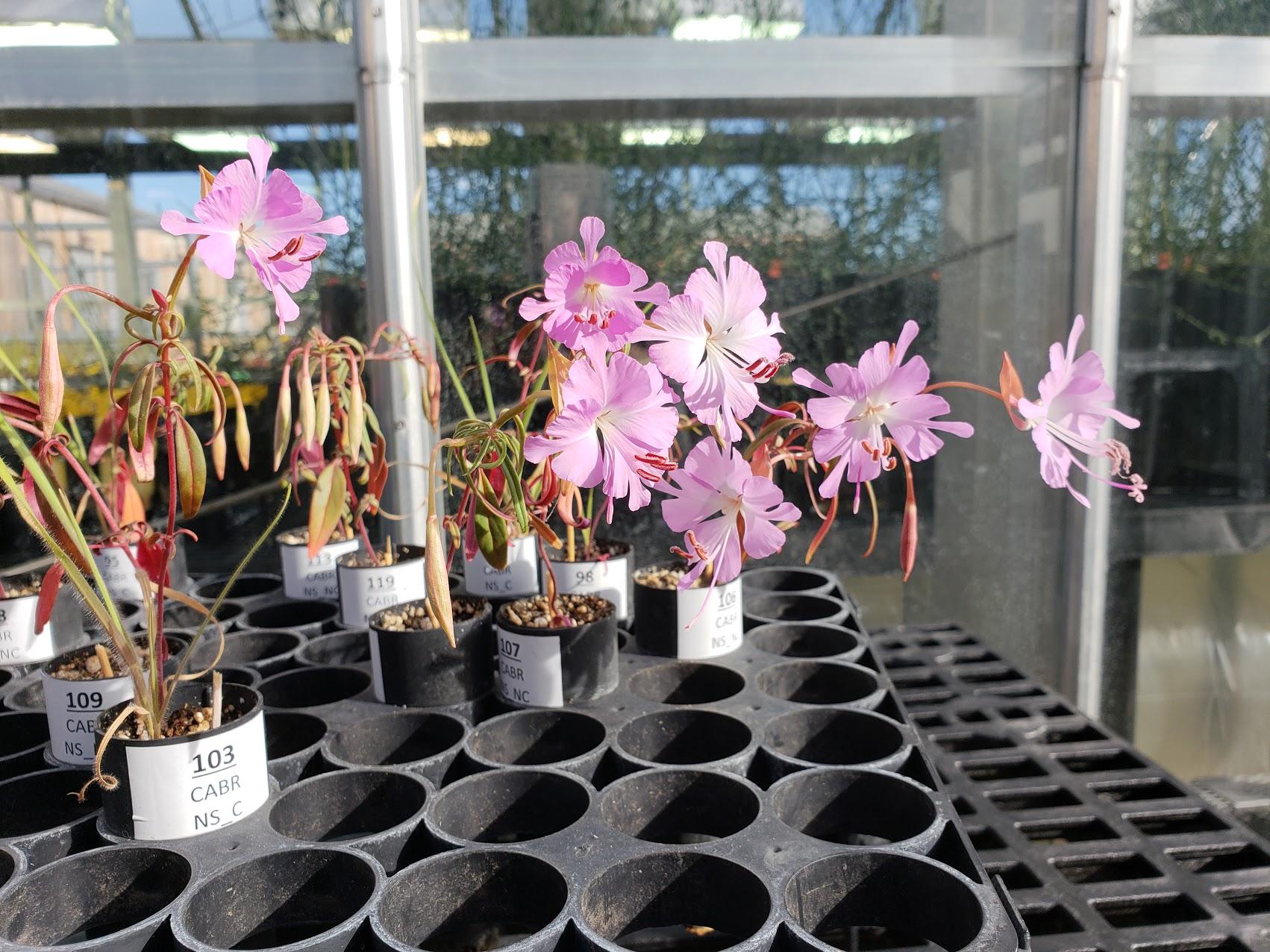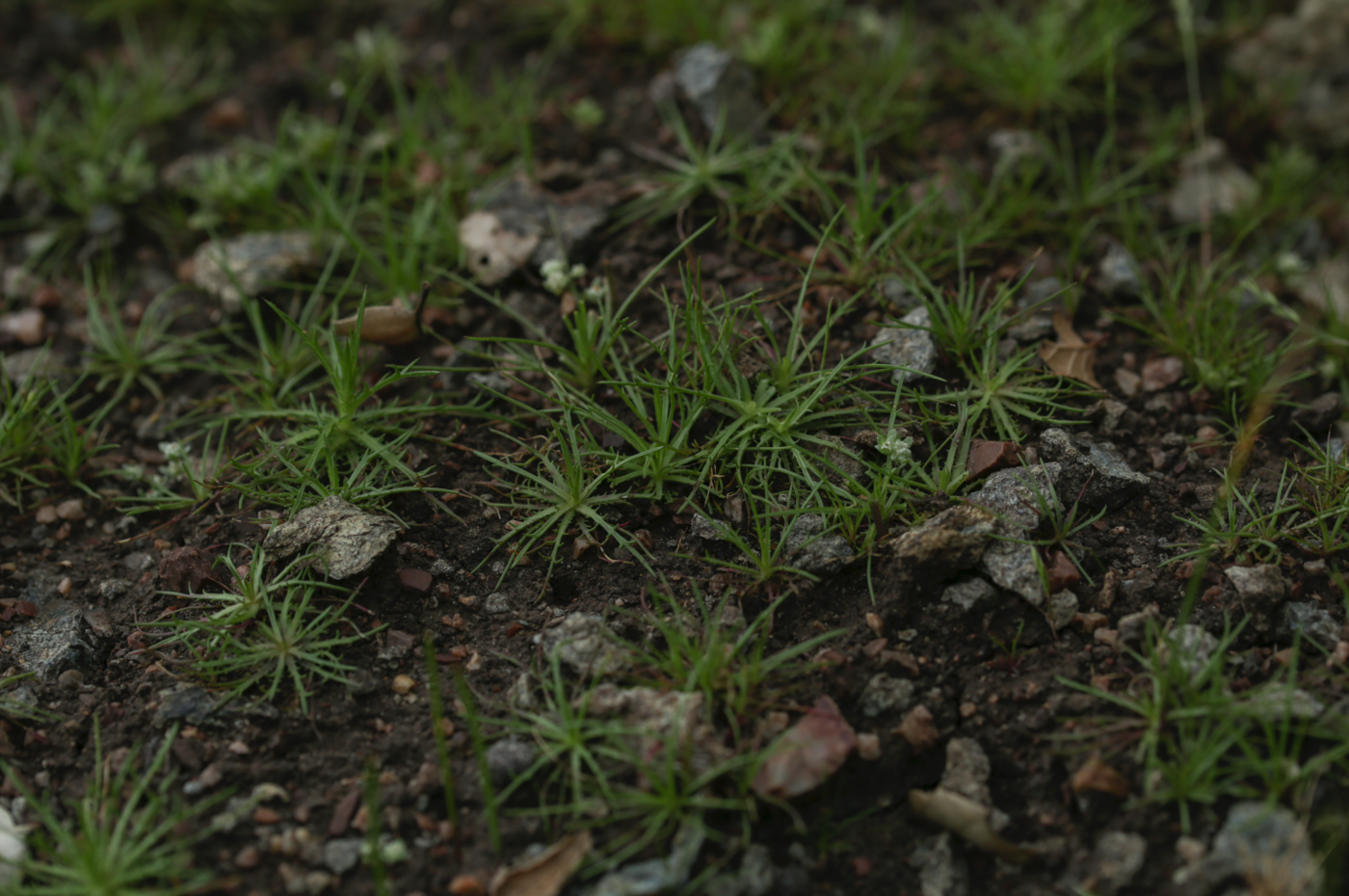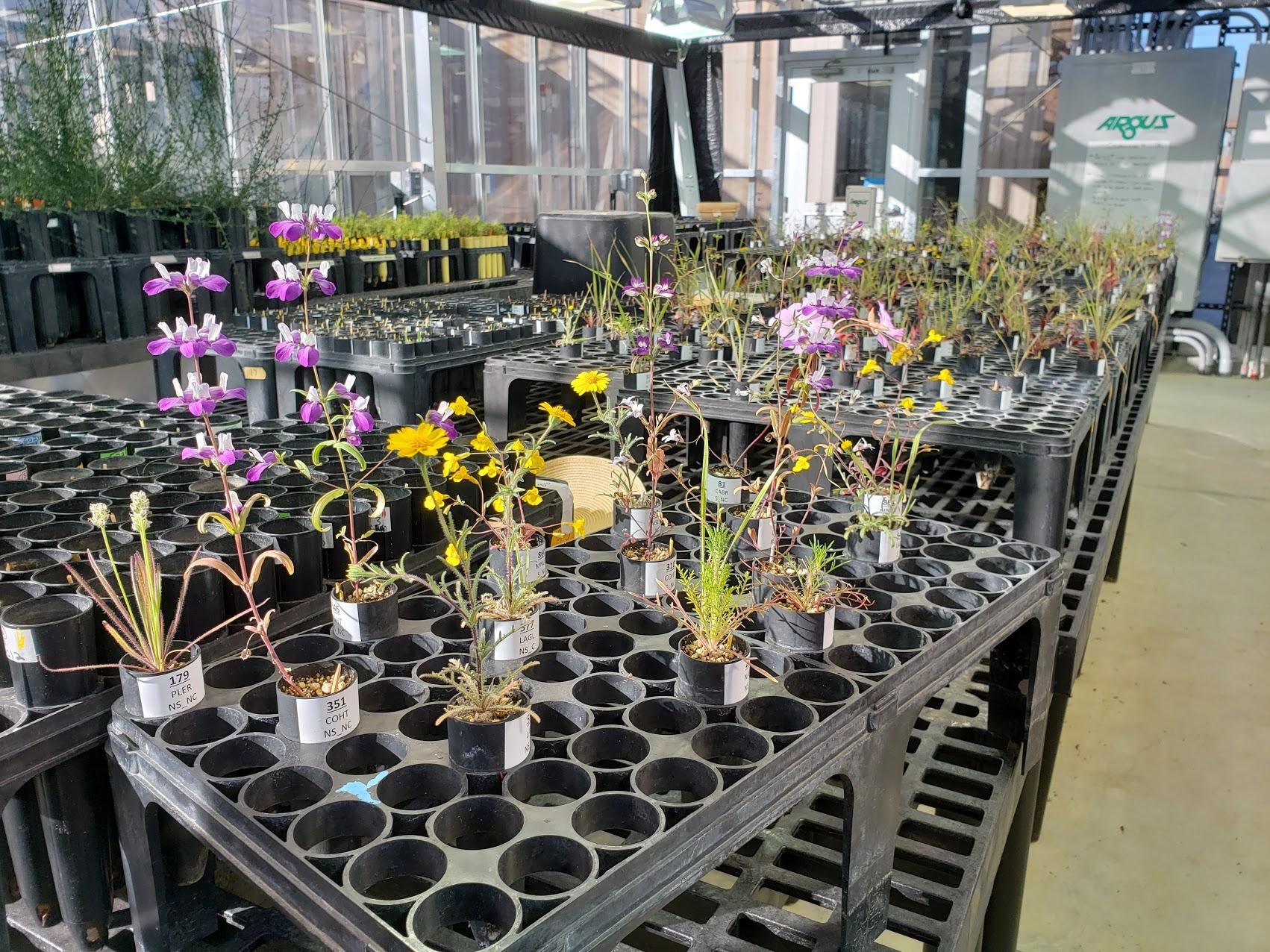Have you ever wondered why certain areas have such dense dramatic displays of wildflowers? It may be the soil that creates distinct habitats where some species thrive and others do not.

Serpentine soils contain unique plant communities that provide insight into ecological specialization and speciation. In California, serpentine soils occur in discrete outcrops throughout the Coast Ranges and foothills of the Sierra Nevada. Serpentine soils are highly stressful because of their low calcium to magnesium ratios, low nutrient concentrations (nitrogen, phosphorous, potassium), high heavy metal concentrations (nickel, chromium, cobalt), and drought-including rocky soil (Rajakaruna, 2018). Additionally, because serpentine outcrops are usually barer and rockier, serpentine plants tend to be more drought tolerant (Sianta & Kay 2019). These features limit the establishment of most plant species on serpentine soils, although a suite of California native plants have adapted to serpentine soils. Serpentine-associated plant species fall into two groups: tolerators and endemics. Tolerator species have populations that occur both on and off serpentine soils, whereas endemic species are restricted to serpentine soil.

Navarretia heterodoxa, a tolerator from
Jasper Ridge Preserve, Stanford, CA.
Transplant experiments have shown that serpentine endemics survive and grow well in non-serpentine soil, begging the question of why they don’t occur off of serpentine (Kruckeberg, 1951). Arthur Kruckeberg (1951) proposed that adaptation to stressful serpentine soils comes with a trade-off such that serpentine endemics are out-competed by prolific non-serpentine plants that don’t have to deal with harsh environmental conditions. Based on Kruckeberg’s hypothesis, we predicted that serpentine endemics are less capable of competing with nonserpentine species, which grow at a faster rate and therefore use available resources faster, compared to serpentine tolerators. In addition to weakened competitive ability, we also predicted that serpentine endemics would be more drought tolerant than serpentine tolerant plants. We measured drought tolerance by measuring water use efficiency and root:shoot ratios. Water use efficiency describes how much plants can grow per unit of water lost: drought-tolerant plants have high water use efficiencies. High root:shoot ratios are common for plants that are growing in nutrient deficient and rocky habitats which supported our prediction that serpentine endemics would have higher root:shoot ratios.
In order to test why serpentine endemics are restricted to serpentine soils, we conducted a greenhouse common garden experiment. We grew 17 different serpentine endemic and tolerator species (8 endemics, 9 tolerators) with and without a grass competitor - overall we grew 930 plants! We measured root and shoot biomass and water use efficiency (using isotopes) after 60 days.
Our results showed that serpentine endemics and tolerators have similar competitive abilities, contrary to our hypothesis. While the majority of endemic taxa had slightly higher root:shoot ratios, the difference between endemic and tolerator species was not statistically significant. There are many explanations for why our results did not meet our predictions. First, plant phenology might play a role. Sambatti & Rice (2007) found that a serpentine tolerator species invests earlier in roots, meaning that we wouldn’t see a significant difference until later in the life cycle of the plants. Additionally, competition may not have had a strong effect in our experiments because we would need to measure flower and fruit production, instead of just biomass.

Greenhouse experiment in its final stages.
We found that endemics have lower water use efficiencies than tolerators when they are in competition, contrary to our prediction. This is an interesting result, showing that competition for water between endemics and tolerators may exclude endemics from non-serpentine areas. These results contribute to a greater understanding of serpentine endemism and the mechanisms that have evolved to cope with highly stressful soils.
This project has given me a lot of insight into growing annual wildflowers in a greenhouse experiment and into the demands of keeping up with 930 individual plants. Having grown up on a serpentine outcrop and spent my childhood hiking around Edgewood Park, a serpentine grassland, I have gained a much deeper appreciation and understanding of the plants found in this distinct and biologically important ecosystem.
Thank you to the Norris center for funding our research. Thank you to Shelley Sianta for guiding me through the scientific process as well as conducting a common garden greenhouse experiment. Thank you to the greenhouse staff, Jim Velzy and Sylvie Childress, for keeping our plants alive over winter break and providing insight into horticultural practices. And of course, thank you Kathleen Kay for inviting me into your lab and supporting our research!
Literature Cited
Kruckeberg, A. R. (1951). Intraspecific Variability in the Response of Certain Native Plant Species to Serpentine Soil. American Journal of Botany, 38(6), 408. https://doi.org/10.2307/2438248
Rajakaruna, N. (2018). Lessons on Evolution from the Study of Edaphic Specialization. The Botanical Review, 84(1), 39–78. https://doi.org/10.1007/s12229-017-9193-2
Sambatti, J. B. M., & Rice, K. J. (2007). Functional ecology of ecotypic differentiation in the Californian serpentine sunflower (Helianthus exilis). New Phytologist, 175(1), 107–119. https://doi.org/10.1111/j.1469-8137.2007.02068.x
Sianta, S. A., & Kay, K. M. (2019). Adaptation and divergence in edaphic specialists and generalists: serpentine soil endemics in the California flora occur in barer serpentine habitats with lower soil calcium levels than serpentine tolerators. American Journal of Botany, 106(5), 690–703. https://doi.org/10.1002/ajb2.1285